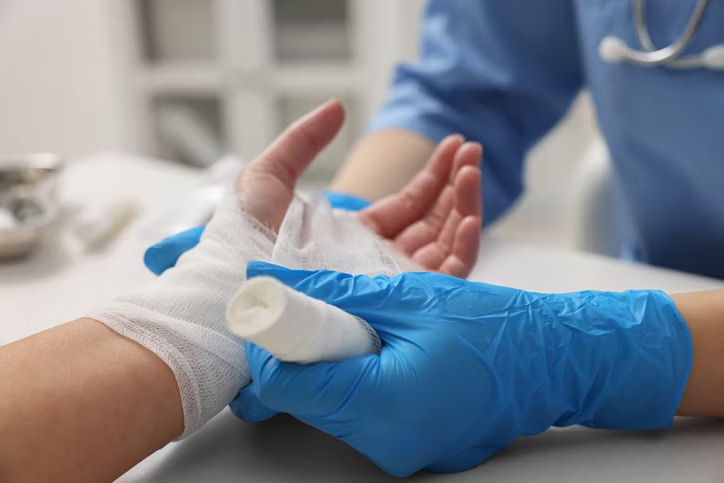Hip resurfacing is a revolutionary approach to hip surgery that preserves more of the natural bone structure than traditional hip replacement. Many patients choose hip resurfacing abroad to access world-class care, advanced surgical techniques, and significant cost savings. For international patients from the USA, UK, Australia, and New Zealand, traveling for hip surgery can mean faster scheduling, expert surgeons, and comprehensive recovery support—all without compromising quality.
What is Hip Resurfacing?
Hip resurfacing is a surgical procedure that trims and caps the femoral head rather than completely replacing it. This approach preserves more of the patient’s natural bone, allowing for better joint stability and improved long-term function. Unlike total hip replacement, which replaces the entire joint, hip resurfacing maintains the natural biomechanics of the hip and reduces the risk of dislocation.
Ideal candidates for hip resurfacing abroad are usually younger, more active patients who have strong bone quality and want to maintain a high level of physical activity post-surgery. Patients suffering from osteoarthritis, avascular necrosis, or certain types of hip dysplasia may find this procedure especially beneficial.
Benefits of Choosing Hip Resurfacing Abroad
Cost savings represent a major benefit for patients seeking hip resurfacing abroad. Surgery in countries like the Philippines can be 50–70% less expensive than in the USA, UK, Australia, or New Zealand. All-inclusive packages typically cover the procedure, hospitalization, pre-operative testing, implants, and post-operative care, eliminating unexpected costs.
Priority scheduling is another advantage. Many international patients face long wait times for elective hip surgery in their home countries. Choosing hip resurfacing abroad often allows surgery to be booked within 2–4 weeks after consultation, helping patients regain mobility sooner.
Patients also gain access to advanced surgical techniques, particularly the Direct Anterior Approach (DAA). This minimally invasive method reduces tissue damage, pain, and scarring, while promoting faster recovery. The combination of advanced methods, expert surgeons, and high-quality facilities ensures that hip resurfacing abroad offers excellent outcomes for patients.
Seamless medical tourism support further enhances the experience. From airport transfers and recovery-friendly accommodations to guided care during hospitalization and rehabilitation, the entire journey is designed to be stress-free. International patients can focus fully on healing while receiving top-tier medical support.
Why Choose the Philippines for Hip Resurfacing Abroad
The Philippines has emerged as a trusted destination for hip resurfacing abroad due to its internationally trained orthopedic surgeons. Many specialists have extensive experience with hip and knee procedures, combining surgical skill with personalized patient care.
JCI-accredited hospitals uphold strict global safety standards. Accreditation ensures infection control, patient safety, and high-quality surgical environments comparable to leading hospitals worldwide. Patients seeking hip resurfacing abroad can trust that facilities meet rigorous standards for surgical excellence.
Concierge-style medical tourism support adds convenience. Patients receive guidance on flight arrangements, accommodations suitable for post-surgery recovery, and airport transfers. Even after returning home, telemedicine follow-ups and personalized rehabilitation plans are available to ensure continuity of care.
Positive testimonials from patients in the USA, UK, Australia, and New Zealand emphasize the effectiveness of hip resurfacing abroad. Many highlight improved mobility, reduced pain, and a faster return to daily activities, demonstrating both clinical success and patient satisfaction.
Understanding the Procedure
Hip resurfacing surgery begins with a detailed consultation and evaluation. Surgeons assess the hip joint, discuss medical history, and determine whether the patient is a suitable candidate for the procedure. Pre-operative testing may include X-rays, MRI scans, and blood tests to ensure optimal surgical planning.
The surgery involves trimming the damaged femoral head and covering it with a metal cap, while the hip socket receives a matching metal cup. The Direct Anterior Approach (DAA) is often used for hip resurfacing abroad, as it involves minimal disruption of muscles and soft tissues. This method allows for smaller incisions, reduced pain, and faster post-operative recovery.
Recovery typically begins immediately after surgery with guided physiotherapy. Patients often regain mobility faster than traditional hip replacement, with many able to walk with assistance on the first day post-surgery. Rehabilitation focuses on restoring range of motion, strengthening muscles, and gradually returning to normal activity levels.
Cost Considerations
One of the most compelling reasons to consider hip resurfacing abroad is affordability. Cost varies depending on hospital, surgical technique, implant type, and length of stay, but international patients frequently save 50–70% compared to home-country prices. All-inclusive packages typically cover surgery, hospital stay, implants, medications, and rehabilitation.
Comparisons with the USA, UK, Australia, and New Zealand highlight the significant savings available without compromising quality. Patients can access state-of-the-art facilities, highly trained surgeons, and comprehensive care at a fraction of the cost. Transparent pricing ensures no unexpected expenses, making planning easier for international travelers.
Preparing for Surgery Abroad
Proper preparation ensures a smooth surgical journey. Patients should bring relevant medical records, undergo pre-surgery testing, and confirm travel arrangements. Hospitals providing hip resurfacing abroad often assist with visa requirements, flight bookings, and accommodation arrangements.
Choosing the right hospital and surgeon is crucial. International patients should verify credentials, review patient testimonials, and confirm facility accreditation. Pre-operative education and consultation help patients understand the procedure, recovery expectations, and rehabilitation requirements.
Post-Operative Care and Rehabilitation
Post-surgery care is essential for successful hip resurfacing abroad. Personalized rehabilitation programs are designed to restore joint function and mobility. Telemedicine follow-ups allow patients to communicate with their surgical team even after returning home, ensuring ongoing support and guidance.
Patients are encouraged to follow physiotherapy exercises, maintain proper nutrition, and attend scheduled check-ups. Recovery-friendly accommodations in the Philippines allow patients to rest comfortably, minimizing stress on the healing hip.
Takeaway
Choosing hip resurfacing abroad allows patients to access advanced orthopedic care, minimize costs, and recover in a supportive, high-quality environment. With internationally trained surgeons, JCI-accredited hospitals, and comprehensive post-operative care, international patients can regain mobility, reduce pain, and enjoy a more active life. Scheduling surgery abroad is straightforward, with fast-track options, personalized rehabilitation, and guidance throughout the entire process.
Hip resurfacing abroad provides an opportunity to restore joint function, reclaim independence, and experience life without the limitations of hip pain. Patients from around the world are discovering that affordable, world-class care and expert support are within reach, making hip resurfacing abroad a trusted choice for lasting results.
Frequently Asked Questions (FAQs)
Do you offer surgery for both hips and knees?
Yes, the center specializes in hip and knee surgeries abroad, including total and partial replacements, with minimally invasive techniques.
How much does hip resurfacing abroad cost?
All-inclusive packages are typically 50–70% cheaper than similar procedures in the USA, UK, Australia, and New Zealand. Packages include surgery, hospital stay, implants, medications, and rehabilitation.
What surgical techniques are used?
The Direct Anterior Approach (DAA) is the primary minimally invasive technique for hip resurfacing abroad, promoting faster recovery and less post-surgical discomfort.
How soon can surgery be scheduled after consultation?
Priority scheduling allows surgery to be booked within 2–4 weeks of the initial consultation.
What type of post-surgery care is provided?
Patients receive personalized rehabilitation programs, telemedicine follow-ups, and comfortable accommodations for recovery in the Philippines.
Is hip resurfacing abroad safe?
Yes, procedures are performed in JCI-accredited hospitals by internationally trained surgeons, ensuring world-class safety standards and outcomes.
Who is an ideal candidate for hip resurfacing?
Patients are generally younger and active, with strong bone quality and conditions such as osteoarthritis or avascular necrosis.






